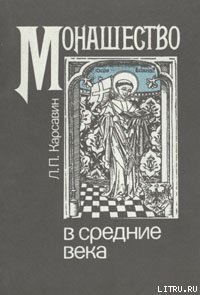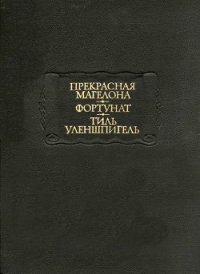Культура сирийцев в средние века - Пигулевская Н. В. (мир бесплатных книг .txt) 📗
Нитрийская пустыня 132
Нубия 30, 230
Осроена 12, 24, 32, 34, 229
Палестина 7, 8, 31, 58
Пальмира 8, 31, 32
Париж 230
Парфия 8
Пафлагония 223
Пекин 28, 230
Передняя Азия 23, 27, 32, 115
Перат де Майшан см. Басра
Парс (Перас) 73
Персида см. Иран
Персидский залив 28, 56, 217
Персия см. Иран
Петра 14, 31, 32
Радан 81
Рев Ардашир 52, 216, 217, 222
Решайна 154
Рим 32, 142, 143, 151, 154, 169, 189
Русафа 39
Сабришо монастырь 80
Салак Внешний (Салак Нарсая, Бананас) 79
Самосата 34
Саура 78
Сафсафа 42, 78
Северная Аравия 7
Северная Месопотамия (Междуречье) 7, 9, 196
Селевкия 58, 81, 127, 188, 195, 210
Селевкия-Ктесифон см. Махозе
Семиречье 23, 230
Серрин 32
Сиарзур (Шахразур) 40
Сианьфу 23, 170, 221
Сирия 7-9, 12, 13 15, 24, 25, 31, 32, 107, 110, 115, 116, 119, 126, 128, 129
Сицилия 143
Соба см. Нисибин
Согд 24, 108
Содом 127
Средиземное море 22, 30, 32
Средиземноморье 21, 27, 56, 229
Средний Восток 21, 22, 25, 31
Средняя Азия 6, 14, 16, 17, 23, 25, 30, 73, 108, 217, 229, 230
Сузы 195
"Счастливая Аравия" см. Южная Аравия
Табсие 178
Тапробан см. Цейлон
Тбилиси 32
Тель Зельма 37, 81
Тигр 24, 32, 37, 56, 66, 81
Тир 143
Тирхан см. Гебилта
Турфан 230
Урха см. Эдесса
Фиваида 205
Филиппополь 223
Финикия 32
Фирузабад 40
Фракия 223
Франция 23
Фригия 119
Хабор 154
Хадрамаут 215
Хадитта (Хедатта) 79
Хазир 38, 42
Халван 49, 50, 212
Халкидон 15
Хара-Хото 230
Хардес 44, 78 {243}
Харран 25, 69, 137, 169, 229
Хатра 8, 122
Хедайаб, гора 40
Хедайаб, область см. Адиабена
Хенайта 81
Хенес 78
Хербат Гелал 79, 80
Херпа 42
Хетара 44, 78
Хефтун 43, 81
Хымьяр 30, 224
Хирта (Хира) 30, 80, 172, 202, 207, 209, 215, 221, 224, 229
Хорасан 45, 171, 172
Хорив (Хореб) 51
Хузистан 40, 63, 110, 206, 207
Хусай 214
Цейлон 16, 230
Центральная Азия 30, 56, 108
Шалмат 78
Шамира 44, 78
Шахргерд 195
Шебан 80
Шена 81
Шигар (Санджар) 71, 209
Шираз 40
Шурзак 37, 81
Шуштер (Турстар) 196
Эдесса 7, 8, 16, 22, 24, 25, 28, 31, 34, 35, 418, 52, 56-63, 65, 71, 82, 83, 91, 110, 118, 132, 137, 141, 143, 145, 148, 169, 170, 186-190, 196, 201, 212, 228, 229
Экра 78
Элам 45, 73
Элефантина 34
Эфес 14, 58
Эфиопия 6, 12, 16, 28, 30, 229
Южная Аравия 6, 7, 21, 29, 224, 229 {244}
SUMMARY
N. V. Pigulevskaya's monograph Syrian Culture in the Middle Ages is a new stage in her study of Syrian sources, It marks a transition from the use of these sources as a background material for the study of the history of Byzantium, Iran, Southern Arabia and India, to a comprehensive research into the history of the Syrian people proper and to the re-creation of their economic, political, ideological, cultural and scholarly life. N. V. Pigulevskaya set herself the task of providing an all-round characterisation of the spiritual culture of the Syrians and of showing its singular place in the history of the medieval world. She treats the history of Syrian culture not as a mechanical combination of parallel developments in literature, historiography, religion and science, but as an integral totality of knowledge and concepts, ideology and ethics. She discusses the cultural level of the people as a whole, including the spread of literacy and the scope of knowledge of an educated Syrian of this period. While concentrating on spiritual culture, which in medieval society was determined to a considerable extent by religious ideology, she observes these phenomena from a materialist point of view.
According to the original design, N. V. Pigulevskaya's book was to have consisted of three large chapters; the author's death, however, left this project unfulfilled. In Chapter 3, "The Spread of Syrian Culture", she planned to deal with the cultural activities of the Syrians in India, Central Asia, the Far East and Europe, which she linked to the major role the Syrians had played in the world trade and economy. She intended to assemble and present all data pertaining to the Syrians' trade and settlements along such important routes as the Great Silk Route and the Incense Road.
Chapter I, "Medieval Education of Syrians. The Syrians and Learning", consists of two large sections. The first deals with the content of Syrian culture at the educational level, presenting an ample exposition, based on Syrian sources (some of them unique), of the history of medieval Syrian schools, the organisation of education, the scope of the curriculum, the teaching methods and the activities of prominent teachers and educators. N. V. Pigulevskaya starts with a description of the initial stage in the teaching process, viz., the teaching of reading and writing. Elementary schools of the Syrians resembled {245} the parish and monastery schools of the Latin West, the Greek East and all the Slav countries. Both the curriculum and the teaching methods used in elementary education were not only preserved over many centuries but had international features: in Osrhoene as throughout the Christian world, education began with the study of the Psalms. Further studies concentrated on the Scriptures as a whole, but especially on the New Testament and its interpretation. School education, therefore, was basically clerical. Yet the Syrians were interested in secular sciences as well. This interest was promoted by their wide-ranging commercial ties, which made literacy indispensable, and the needs of production, which encouraged the development of complex technical knowledge, such as alchemistry, geography and agronomy. A certain amount of professional learning was also required of physicians and master craftsmen.
Elementary school was the first step towards special education, ecclesiastical as well as secular. In a special section devoted to the characterisation of the sources on the history of higher education of the Syrians, N. V. Pigulevskaya examines first of all the Nisibis Academy Statutes. This unique record of Syrian culture contains information on such aspects of the early medieval higher school as its structure and the living conditions, customs and habits of students and teachers. Reflected in it was a striving for a reform of the higher education and a discontent of the students. The author then proceeds to describe Barhadbeshabba ?Arabaya's treatise The Reason of the Foundation of Schools and An Ecclesiastical History, which supplement the Statutes, and cites new facts as well. The Reason of the Foundation of Schools contains two parts, the theoretical one presenting a philosophical analysis of the cognition of the world, and the other dealing directly with school life.
N. V. Pigulevskaya pays special attention to the Academy of Nisibis, the medieval Syrian university. She offers a detailed account of the history of that school and its activities, basing her research on the two sources mentioned above. Her book also contains the first translation into Russian of the Statutes of the Academy of Nisibis.
In the second section of Chapter 1, the author gives a circumstantial analysis of the Syrians' achievements in philology, philosophy, medicine, geography, cosmogony, alchemistry and agronomy. This is supplemented by portraits of a number of prominent Syrian men of learning: Bar Daisan, a scholar, philosopher and poet; Afrahat the Persian Sage, an exegetist and philologist; Ephraim the Syrian, a poet of great talent who {246} exerted a profound influence on the subsequent development of Christian literature; Sergius of Resh'aina, a physician reknowned for his extensive theoretical knowledge and practical activities. The author focuses especially on the Syrians' accomplishments in the field of translation, as a result of which links were established between the learning of ancient classical Greece and medieval Arabic, Indian and Iranian learning, and then, through the medium of the Arabs, with learning in Western Europe.




